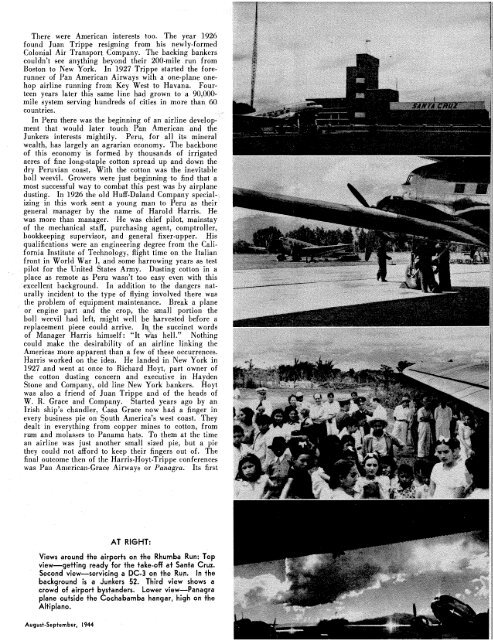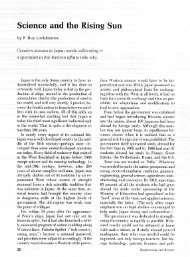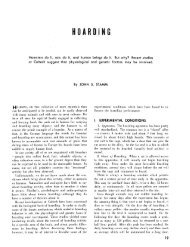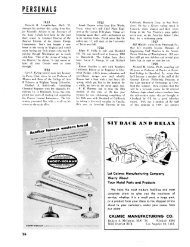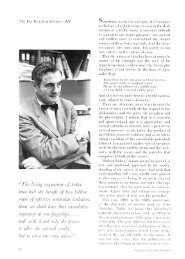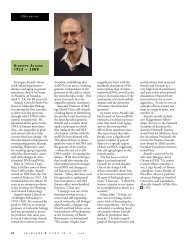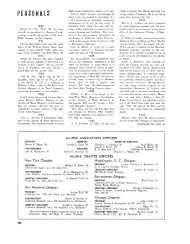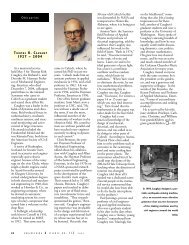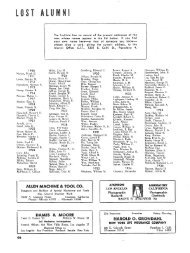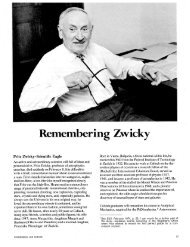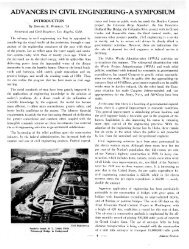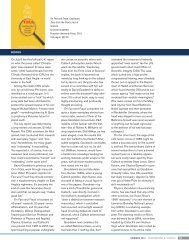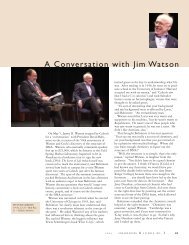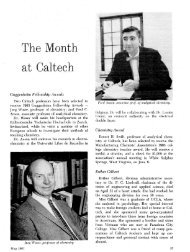Rhumba Run—Part 1 - Engineering & Science
Rhumba Run—Part 1 - Engineering & Science
Rhumba Run—Part 1 - Engineering & Science
Create successful ePaper yourself
Turn your PDF publications into a flip-book with our unique Google optimized e-Paper software.
There were American interests too. The year 1926<br />
found Juan Trippe resigning from his newly-formed<br />
Colonial Air Transport Company. The backing bankers<br />
couldn't see anything beyond their 200-mile run from<br />
Boston to New York. In 1927 Trippe started the fore-<br />
runner of Pan American Airways with a one-plane one-<br />
hop airline running from Key West to Havana. Four-<br />
teen years later this same line had grown to a 90,000-<br />
mile system serving hundreds of cities in more than 60<br />
countries.<br />
In Peru there was the beginning of an airline develop-<br />
ment that would later touch Pan American and the<br />
Junkers interests mightily. Peru, for all its mineral<br />
wealth, has largely an agrarian economy. The backbone<br />
of this economy is formed by thousands of irrigated<br />
acres of fine long-staple cotton spread up and down the<br />
dry Peruvian coast. With the cotton was the inevitable<br />
boll weevil. Growers were just 'beginning to find that a<br />
most successful way to combat this pest was by airplane<br />
dusting. In 1926 the old Huff-Daland Company special-<br />
izing in this work sent a young man to Peru as their<br />
general manager by the name of Harold Harris. He<br />
was more than manager. He was chief pilot, mainstay<br />
of the mechanical staff, purchasing agent, comptroller,<br />
bookkeeping supervisor, and general fixer-upper. His<br />
qualifications were an engineering degree from the Cali-<br />
fornia Institute of Technology, flight time on the Italian<br />
front in World War I. and some harrowing years as test<br />
pilot for the United States Army. Dusting cotton in a<br />
place as remote as Peru wasn't too easy even with this<br />
excellent background. In addition to the dangers nat-<br />
urally incident to the type of flying involved there was<br />
the problem of equipment maintenance. Break a plane<br />
or engine part and the crop, the small portion the<br />
boll weevil had left, might well be harvested before a<br />
replacement piece could arrive. In the succinct words<br />
of Manager Harris himself: "It was hell." Nothing<br />
could make the desirability of an airline linking the<br />
Americas more apparent than a few of these occurrences.<br />
Harris worked on the idea. He landed in New York in<br />
1927 and went at once to Richard Hoyt. part owner of<br />
the cotton dusting concern and executive in Hayden<br />
Stone and Company, old line New York bankers. Hoyt<br />
was also a friend of Juan Trippe and of the heads of<br />
W. R. Grace and Company. Started years ago by an<br />
Irish ship's chandler, Casa Grace now had a finger in<br />
every business pie on South America's west coast. They<br />
dealt in everything from copper mines to cotton, from<br />
rum and molasses to Panama hats. To them at the time<br />
an airline was just another small sized pie, but a pie<br />
they could not afford to keep their fingers out of. The<br />
final outcome then of the Harris-Hoyt-Trippe conferences<br />
was Pan American-Grace Airways or Panagra. Its first<br />
AT RIGHT:<br />
Views around the airports on the <strong>Rhumba</strong> Run: Top<br />
view-getting ready for the take-off at Santa Cruz.<br />
Second view-servicing a DC-3 on the Run. In the<br />
background is a Junkers 52. Third view shows a<br />
crowd of airport bystanders. Lower view-Panagra<br />
plane outside the Cochabamba hangar, high on the<br />
Altiplano.<br />
August-September, 1944


